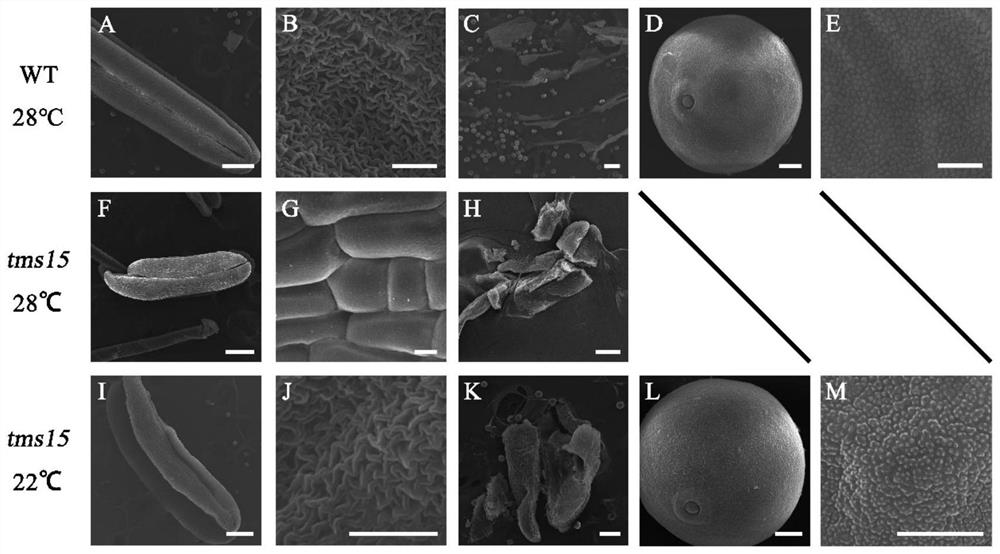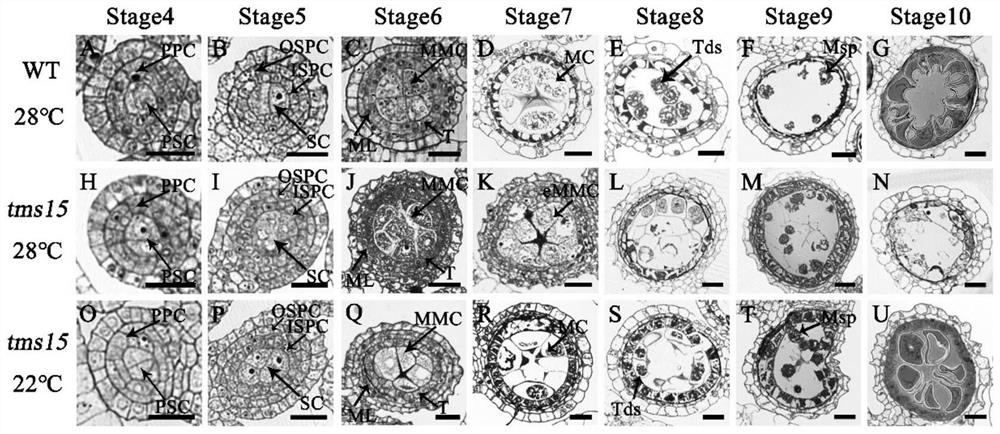Plant temperature-sensitive sterile mutant tms15 and application thereof
A temperature-sensitive sterile and plant technology, applied in the agricultural field, can solve the problems of few light-temperature-sensitive gene resources and limited genes, and achieve the effects of good sterility performance, easy access, and high breeding efficiency
- Summary
- Abstract
- Description
- Claims
- Application Information
AI Technical Summary
Problems solved by technology
Method used
Image
Examples
Embodiment Construction
[0039] The present invention will be described in detail below with reference to the accompanying drawings and the embodiments thereof, but the protection scope of the present invention is not limited to the scope described in the embodiments.
[0040] The inventors used the japonica rice variety Zhonghua 11 (Oryza sativa ssp.japonica, ZH11) as a material, and used ethyl methanesulfonate (EMS) mutagenesis to screen thermosensitive sterile mutants. The mutagenesis and screening of EMS mutants refer to Zhang et al.2007. The M1 generation after mutagenesis treatment was planted in the field, and after the M1 generation fruited normally, the spikes with a higher seed setting rate per plant of the M1 generation were cut and mixed as seeds of the M2 generation. In late spring and early summer of the second year, the M2 generation seeds were planted, and the male sterile phenotype plants were screened out under high temperature conditions. The recovery of fertility, the possible tem...
PUM
 Login to View More
Login to View More Abstract
Description
Claims
Application Information
 Login to View More
Login to View More - R&D
- Intellectual Property
- Life Sciences
- Materials
- Tech Scout
- Unparalleled Data Quality
- Higher Quality Content
- 60% Fewer Hallucinations
Browse by: Latest US Patents, China's latest patents, Technical Efficacy Thesaurus, Application Domain, Technology Topic, Popular Technical Reports.
© 2025 PatSnap. All rights reserved.Legal|Privacy policy|Modern Slavery Act Transparency Statement|Sitemap|About US| Contact US: help@patsnap.com



